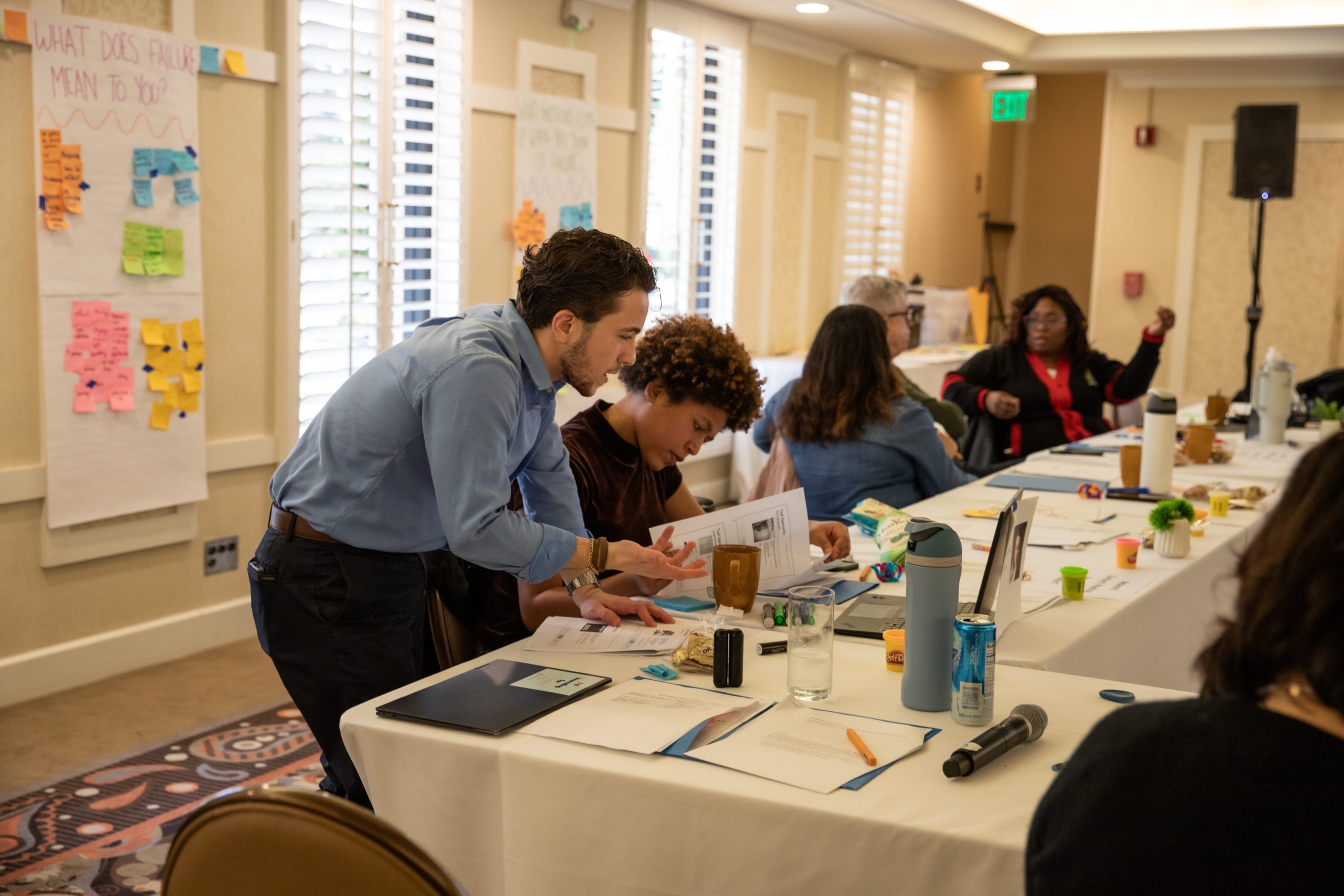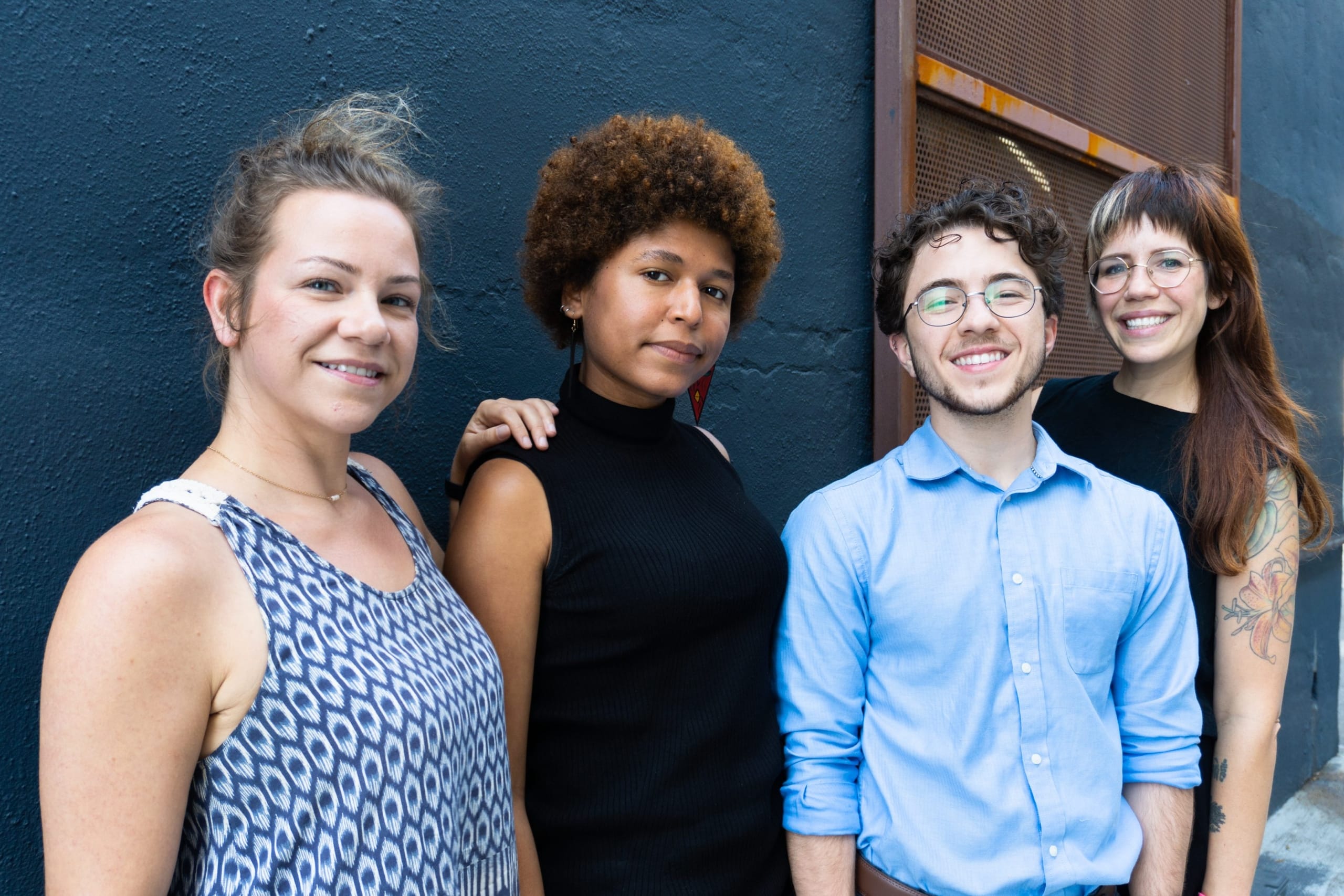Everyone Is an Innovator: youthink’s 8-Phase Process to Transform Adolescent Health

At youthink Incubator Hub, we believe everyone is an innovator. Innovation isn’t limited to tech wizards or entrepreneurs—it lives in anyone willing to listen deeply, ask bold questions, and take action to make change.
We built youthink to help teams across the U.S. and its territories innovate. Over the course of 8 months, they embark on a journey of creativity, collaboration, and community-led problem solving to improve adolescent and young adult health.
At the heart of our approach is the youthink journey map, a graphic representation of the process we use to guide teams from seeing a challenge they want to address, to developing an innovation to change it. Each phase includes specific trainings, resources, and assignments that equip participants to advance along in their process.
This blog post walks through what teams can expect from each of the 8 phases of our journey map, if selected to join one of our cohorts. It culminates in a case study that brings to life one team’s innovation journey. Read on to learn more.
1. Onboard: Welcoming Every Voice to the Table
Time Period: As soon as teams accept our offer, until the program starts. 4 to 6 weeks.
The Onboard phase focuses on building collaboration and ensuring everyone feels welcomed, heard, and valued. During this phase, teams will get to know youthink staff and complete logistical tasks so they are ready to dive in when the program begins.
During this phase, participants:
- Learn the five phases of design thinking
- Examine the systems, partners, and biases that relate to their work
- Create a shared understanding of their focus area and the next steps in their innovation journey
The Onboard phase sets the tone: everyone has something valuable to contribute, and every voice matters.
2. Orient: Understanding the Landscape
Time Period: 3 to 4 weeks
Once teams are onboarded, we help them Orient to foundational knowledge in adolescent health innovation. Teams learn about design thinking—a problem-solving process that focuses on understanding what people need, exploring many ideas, and testing solutions to find what works best. They also explore context, challenges, and opportunities surrounding the challenge they’re focused on. This phase is about grounding innovation in reality.
During this phase, participants:
- Learn the five phases of design thinking
- Examine the systems, partners, and biases that relate to their work
- Create a shared understanding of their focus area and the next steps in their innovation journey
The Orient phase builds a critical foundation: teams gain the clarity needed to understand their landscape before developing solutions.
3. Empathize: Rooting in Experience
Time Period: 8 to 10 weeks
Empathy is the heart of design thinking—and the Empathize phase is where participants step into the shoes of young people and stakeholders to deeply understand their experiences. This phase uses interviewing, focus groups, and other hands-on activities to learn about people’s behaviors, feelings, motivations, and values.
During this phase, participants:
- Conduct empathy interviews with those impacted by their focus areas
- Use creative tools and methods to connect with and learn from their community
- Learn how to ask questions that reveal people’s underlying needs
The Empathize phase is how we start to design with communities, rather than design for communities.
4. Define: Turning Insights into Clear Challenges
Time Period: 6 to 7 weeks
After learning all about their community’s experiences, the next step is to Define the core need. Teams synthesize everything they’ve heard into themes and identify key pain points and opportunities for change. Participants develop focused problem statements, framed as “How Might We” questions. Defining the problem clearly helps teams avoid jumping to solutions and helps them deeply explore the problem.
During this phase, participants:
- Analyze their data to identify insights
- Develop focused, open-ended problem statements that center community needs
- Review what already exists to address their problem
The Define phase provides a clear challenge, so that we are ready to innovate with purpose.
5. Ideate: Generating Bold, Creative Solutions
Time Period: 4 to 6 weeks
With a well-defined challenge, teams are ready to Ideate—brainstorming new ideas in high-energy, creative ways. First, teams focus on quantity over quality, generating as many ideas as possible to think beyond traditional solutions. Then, they narrow down their ideas to the most promising ones to pursue further.
During this phase, participants:
- Learn and use innovative brainstorming methods with community
- Assess ideas for impact, feasibility, and efficacy
- Choose one or two ideas to develop further
The Ideate phase is where big dreams take shape.
6. Prototype: Bringing Ideas to Life
Time Period: 2-4 weeks
The Prototype phase is all about experimentation. Participants create simple, low-cost versions of their ideas—whether it’s a mock-up of an app, a sample social media campaign, or a small pilot event. Prototyping helps teams test assumptions early, gather feedback, and improve ideas before investing too much time or money.
During this phase, participants:
- Build at least one prototype that shows how their idea could function in real-life
- Create a plan for gathering feedback about their prototype, including who to engage, what to test, and how to translate insights into improvement
Prototypes are not final products—they’re tools for learning, iterating, and improving.
7. Test: Learning from Real-World Feedback
Time Period: 4 to 6 weeks
Ideas meet reality as teams begin to Test their prototypes. Teams show their early-stage prototypes to their target audience, gather feedback, and make adjustments. This phase is a cycle of learning: build, test, refine, repeat.
During this phase, participants:
- Test their prototypes with stakeholders
- Gather feedback from the community
- Revise their prototype for improvement
Testing keeps the process practical and grounded—solutions are shaped by the people they’re meant to serve.
8. Sustain: Building Long-Term Impact
Time Period: Throughout the program. Focused in final 2 to 3 weeks.
The final phase, Sustain, focuses on helping teams carry their innovations forward after their time with youthink ends. This phase focuses on how teams can continue to grow their prototypes, design thinking skills, and partnerships to make long-term impacts.
During this phase, participants:
- Tell the story of their innovation journey in youthink
- Share learnings and next steps with those who can support them in making change
- Identify opportunities and strategies to continue advancing their innovation
The Sustain phase represents youthink’s commitment to lasting change, not short-term solutions.
Case Study

In 2024, Taz, Jessie, Clark, and Stef from Answer—a national sexual education non-profit organization—applied to youthink to address a gap they had noticed: mental health and sexual health are connected yet rarely discussed together. They wanted to understand how young people, and the adults who support them, could have more open, honest conversations about the intersection of these two topics. After reviewing their application and interviewing the team, we knew they were a fit for youthink.
Onboard: Once Answer accepted our offer, we met with the team to continue getting to know one another and outline program expectations. We wanted every participant to feel that their perspective was valued and their voice mattered. Answer also met internally to establish shared goals and norms for how they would work together.
Orient: Once our program officially started, Answer immersed themselves in learning foundational concepts in innovation, design thinking, and adolescent health. They explored the systems, biases, and challenges influencing the connection between mental and sexual health. This work helped Answer gain a clearer understanding of the landscape they sought to change and the values guiding their work.
Empathize: Equipped with a deeper understanding of their focus area, Answer dove into learning about the thoughts, experiences, and needs of their community. The team conducted 30 empathy interviews with a range of stakeholders and surveyed 100 young people from across the country. The level of engagement showed they were onto something meaningful.
Define: Next Answer analyzed their data—reading, sorting, and identifying underlying patterns and themes. They discovered that youth and adults alike wanted more open, shame-free conversations about mental and sexual health—but stigma, fear, and uncertainty often stood in the way. These patterns shaped the core challenge Answer decided to solve: How might we empower youth to feel confident having conversations about their own mental and sexual health in ways that reduce stigma and shame?
Ideate: This was the moment Answer was waiting for—a defined question they could brainstorm solutions for to then create real change! They hosted an ideation session with youth from Sex, Etc., followed by a smaller session with their core team and board members. Together, they explored a wide range of ideas before honing in on one that felt feasible, impactful, and effective: an interactive game designed to spark meaningful conversations between teens and their trusted adults about mental and sexual health.
Prototype: It was time for Answer to bring this idea to life. Using simple, low-cost materials—handwritten question cards and pom-pom pieces—they created a low-fidelity prototype of the game to simulate how it might work. This hands-on experiment allowed them to test the game’s flow, tone, and engagement level before investing significant time or money.
Test: Answer shared this prototype with youth, educators, and other stakeholders through 14 separate testing sessions. The team collected feedback, observed how people interacted with the game, and refined their design after each session. These iterations strengthened the content, clarified the messaging, and enhanced the user experience.
Sustain: Less than a year after applying to youthink, Answer had developed a tangible solution to address the gap they had identified. Determined to keep going, they joined an accelerator program to create an improved version of their game—Say More!—alongside a companion podcast that models healthy, candid conversations between adults and teens. Follow their journey here.
Through each phase of the youthink process, Answer turned empathy into insight, and creativity into action, demonstrating how intentional design can transform complex health conversations into meaningful change. We can’t wait to see where these innovators go next!
Why The youthink Process Works
At youthink, we don’t just build solutions—we build changemakers. We equip young people and adults with the tools to understand problems deeply, design with empathy, and lead with purpose. And along the way, they discover something truly transformative: their own power to innovate.
Whether you’re a student, educator, health advocate, or a youth-serving professional, we invite you to learn more about the youthink journey where we work to make the future of young adult and adolescent health brighter for everyone.
